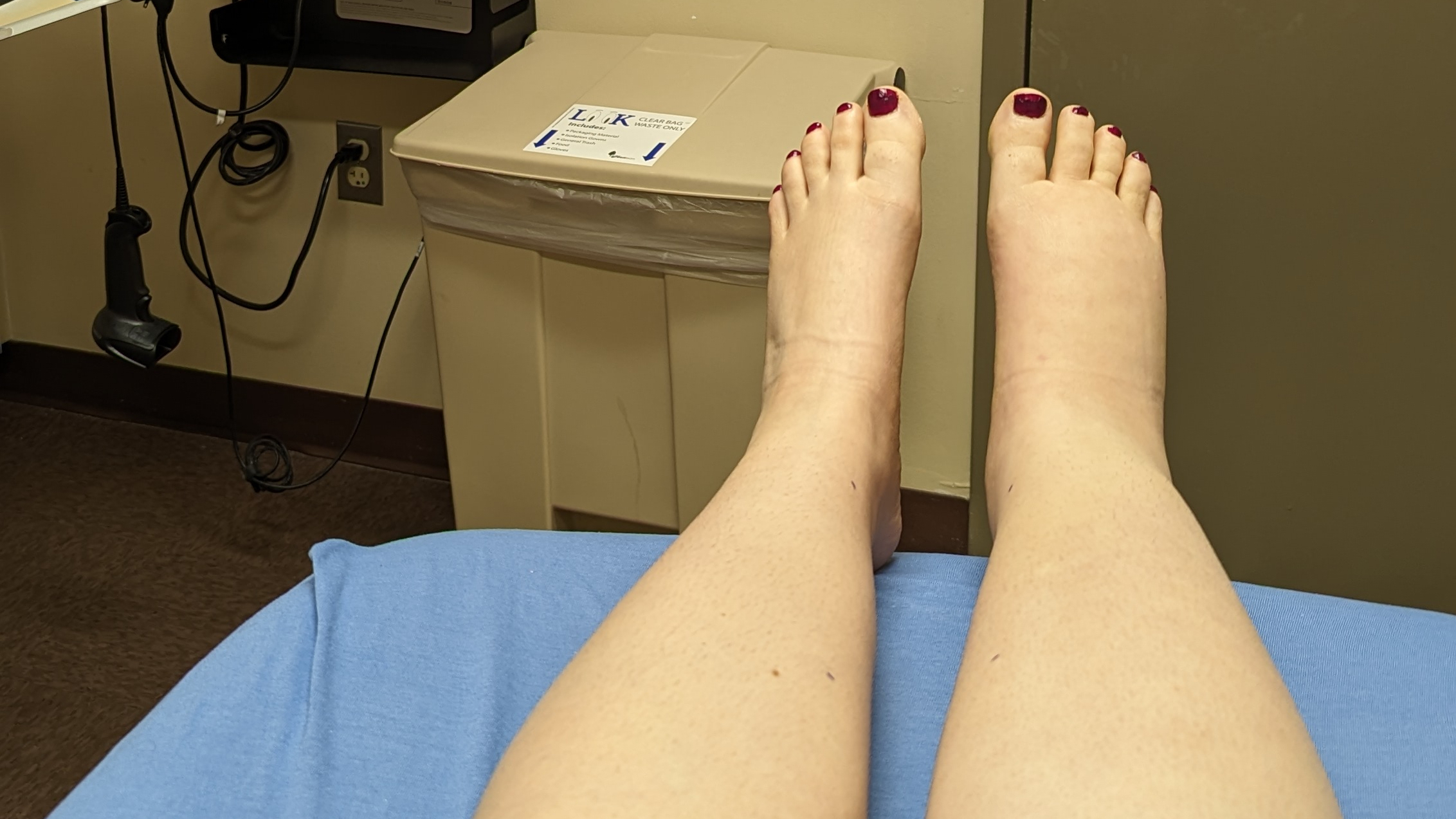Back in 2011, I wrote a post on lymphorrhea that briefly explained what it is, why it happens, and what to do if it happens to you. It’s been one of the most viewed posts here on the site, so I thought it’d be a good idea to revisit the topic and take a more thorough look at lymphorrhea and lymph.
“Are you there, God? It’s me, lymphorrhea.”
My first experience with lymphorrhea happened when I was a senior in high school. I was sitting in a quiet auditorium, taking an exam with the rest of my classmates, when I noticed my right ankle felt wet.
I reached down to wipe at it absentmindedly, but a few seconds later it was wet again. Wiped it. Still wet.
To my horror, the fluid just kept coming. It was draining out of seemingly nowhere — I had no cut, no scratch that I could see, just a teeny-tiny pore-sized break that had spontaneously began to leak.
It continued until my shoe was completely soaked through with the unknown fluid, and I was praying it would stop before someone noticed. It felt like a scene out of a Judy Blume novel: what was happening to my body, and why did it have to happen at school?! I sat through the rest of the exam unable to focus, instead feeling utterly mortified and silently freaking out.
“Mortified and freaking out” is, I think, most peoples’ response when they first notice fluid leaking from their body. What is it anyway, and where’s it coming from?
Lymph fluid
The leaking fluid is a substance called lymph, although it goes through a couple transformations before it actually becomes lymph.
The fluid begins its journey as arterial blood plasma, but once it flows into the tissues it’s called extracellular fluid. Within the interstitial spaces in the tissue, the fluid delivers nutrients and oxygen to the cells and removes the debris and waste. After all that’s done, most of the extracellular fluid rejoins circulation as venous blood, and the remaining bit stays behind as lymph.
Watery and usually colorless (although sometimes it has an amber tint to it), lymph is full of waste, pathogens, and undigested proteins removed from cells. The motions of muscles and joints help pump lymph throughout the body, filtering it through lymph nodes as it journeys upward toward the base of the neck. There, the cleansed lymph is drained through the subclavian veins and returned to the circulatory system.
For visual learners, this video from the Khan Academy explains it really well:
Lymphorrhea: what’s going on?
Lymphorrhea is when lymph leaks from the surface of the skin, usually manifesting as a beading or trickling of fluid. Insect bites, abrasions, cuts, wounds, cracks — no matter how small, any break in the skin has the potential to allow lymph to weep through.
According to lymphedema specialist Carmel Phelan, “the pressure of lymph fluid inside the skin tissues is so high that the skin is unable to stretch fast enough to accommodate the fluid”; this makes the skin so tense with excess fluid that the slightest bump or knick can result in lymphorrhea.
Lymphorrhea can affect any area of the body, but it most commonly occurs in the legs and genitals.
Treating the leak
If you spring a leak, don’t worry — there are things you can do to treat it, either by yourself or with the help of a caregiver or lymphedema therapist.
First, you should clean the area where the fluid is leaking to reduce risk of infection. Then, apply a moisturizing lotion to help heal the skin and protect it from further breakdown. Dress the wound with sterile, absorbent, non-sticky bandages, and then wrap your limb with short-stretch compression bandages. With this added pressure, the leaking should stop within one or two days.

Don’t forget to change the bandages often, as the weeping lymph may make them wet and uncomfortable (not to mention it can cause further skin breakdown). When you’re at rest, elevate! Once the leakage has stopped and your skin’s condition has improved, you can don your usual garments again.
As always, double check with your lymphedema therapist or doctor on what they recommend. They may advise differently depending on your symptoms!
Complications and prevention
The earlier you address your lymphorrhea, the better.
If left untreated, it can lead to serious complications for lymphies: the protein-rich lymph fluid is considered a natural food source for bacteria, meaning the draining break in the skin provides an entry point for bacteria to enter your body. This can cause infection, such as cellulitis, lymphangitis, or erysipelas. Lymphorrhea is also highly caustic to skin tissue and can develop into a large, gaping wound. (If any of these complications occur, immediately seek medical attention.)
A good prevention tip is to be compliant in wearing your compression so your lymphedema-affected area isn’t overloaded with stagnant fluid. One of the best thing you can do to avoid lymphorrhea, though, is to take care of your skin by keeping it clean and moisturized. Also avoid cuts, bites, and scrapes on your affected area if you can — I know that’s often easier said than done, but if you’re careful, your chances of lymphorrhea will be that much less!





Leave a Reply to Donna MillerCancel reply